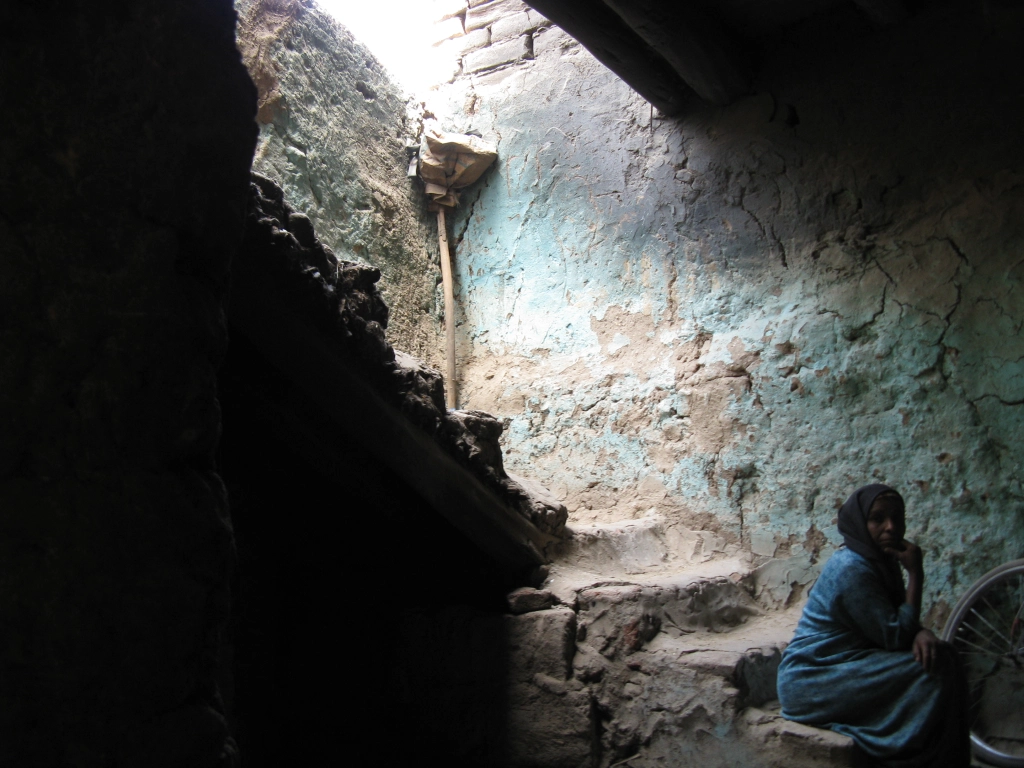If there is one thing we like at Irish Slice towers, it’s a good photo exhibition.
We have been fortunate enough to see the pics of great photographers, from Bruce Davidson to the legendary Alfonso. In these excursions, we have traipsed around El Matadero, the La Caixa Forum, La Tabacalera, and many more cultural hot spots.
But what’s that? One half of the cultural duo that makes up El Arpa/Irish Slice of Madrid has her own photo exhibition? Tell us more!
Rural Egypt & Disappearing Tradition
About twelve years ago, María spent time in Egpyt, documenting the mud-brick dwellings of the locals for her PhD, and since then, she has written abundantly about this topic, as well as appearing in talks and sharing her passion and knowledge about these people and their disappearing culture.
In the words of the photographer herself:
The photographs in this exhibition were taken mainly in two governorates of the Egyptian Northwest Delta, Kafr el-Sheikh and Gharbiya, an area where traditional mudbrick houses are, sadly, an exception nowadays.
María
What’s more, María has written a book about traditional methods and ways of life, with the aim of inspiring us all to take a leaf from the book of old cultures so we can take better care of the environment. It’s called The Stuff of Life: Ancient Inspiration for Sustainable Living, and with it, we can say she is an author as well as a photographer.
Speaking of which, let’s learn more about the exhibition.
An eye on mud-brick
If you see the pictures in the exhibition (the link to a virtual one is available below), then you will get a sense of how these photographs were captured. Spontaneity is the motif that runs through these images, and a celebration of what happens when artistic intentionality meets happenstance, and when the unpredictability of life literally walks into frame. Added to this is that magic, mercurial thing, the capturing of the in-between. The idle gaze, the coming together of gossiping neighbours, and a suspicious village leader peering around a corner are all images that got frozen in time, inside María’s pictures. The sense of what happens next is a tantalising question that never gets answered.
Generosity is another touchstone, as María was welcomed into the homes of strangers. One elderly woman, who lived a solitary and lonely existence, was so happy to have a visitor and delighted to be the subject of a photo. There was the other woman who eagerly showed off her rabbits, animals that were pets but also bred for food. As they got fatter, their day of reckoning, of being placed on a plate, drew nearer.

Doors and doorways are striking metaphors, as well. As observers of these pictures, we are literally and figuratively entering new worlds, stepping over the threshold into someone else’s personal space. A home is the most intimate of spheres, and that is why we meet many of our subjects in those in-between spaces, caught between going in and going out, or even as they wait at the doorway, defining that simple structure as their place to socialize.
Finally, the very character of these houses – mud – is interesting. As the needs of the people living in the houses changed, the mud could be shaped and adapted, giving new energy and purpose to the inhabitants and their possessions as life trundled on and changed, as it always does. It’s a beautiful contrast to photography, which makes a monument out of the static.
Where can I see these pics?
That’s a great question! By following this link, you will be plunged into a fading, captivating world. Get lost in time, the moment, and enjoy. If you are in Madrid, this exhibition will be in a galley near you in September/October. Stay tuned for more updates.
And remember…
For more on history, check out our piece on the forgotten Olympian. Listen to our podcast for more info on this exhibition, and head to our online shop for some literary-inspired fashion. You can also buy our book on Amazon, as well as María’s new book here.
Thanks for reading!


Leave a comment